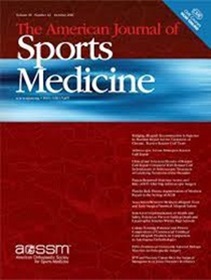The Era of Resistance Training as a Primary Form of Physical Activity for Physical Fitness and Health in Youth Has Come.
IF 9.3
1区 医学
Q1 SPORT SCIENCES
引用次数: 0
Abstract
Resistance training (RT) is widely regarded as the gold standard approach for enhancing muscular fitness (i.e., muscle strength, power, and muscular endurance) in youth while also providing health and physical fitness benefits traditionally associated with aerobic training (e.g., enhanced cardiorespiratory fitness, reduced body fat, improved insulin sensitivity). Additionally, while bone health can be improved following RT (particularly after plyometric jump training), aerobic training may result in a lesser or even neutral impact on bone mineral density enhancement (e.g., swimming). Regarding mental health and cognition, while aerobic training has well-established positive effects, preliminary evidence in obese youth suggests that RT may offer greater benefits in certain aspects compared to aerobic training. Additionally, RT can reduce the risk and incidence of injuries in youth. Overall, we argue in this Current Opinion article that the current consideration of RT as an additional, rather than essential (possibly even the most essential), aspect of physical activity in current national and international guidelines needs to be reconsidered. Overall, there is an urgent need to inform relevant stakeholders that, while aerobic activities remain essential, the next generation of physical activity guidelines should place greater emphasis on the particular importance of RT, providing more comprehensive guidance on its implementation for youth.抗阻训练作为青少年身体健康的主要体育活动形式的时代已经到来。
抗阻训练(RT)被广泛认为是增强青少年肌肉健康(即肌肉力量、力量和肌肉耐力)的黄金标准方法,同时也提供传统上与有氧训练相关的健康和身体健康益处(例如,增强心肺健康、减少体脂、改善胰岛素敏感性)。此外,虽然RT(特别是增力跳跃训练后)可以改善骨骼健康,但有氧训练可能对增强骨密度的影响较小,甚至没有影响(例如游泳)。在心理健康和认知方面,虽然有氧训练具有公认的积极作用,但肥胖青年的初步证据表明,与有氧训练相比,RT可能在某些方面提供更大的益处。此外,RT可以降低青少年受伤的风险和发生率。总的来说,我们在这篇当前观点文章中认为,在当前的国家和国际指南中,需要重新考虑将体育锻炼作为体育活动的一个附加方面,而不是必不可少的(甚至可能是最重要的)方面。总的来说,迫切需要告知相关利益相关者,虽然有氧运动仍然是必不可少的,但下一代体育活动指南应该更加强调RT的特别重要性,为青年实施提供更全面的指导。
本文章由计算机程序翻译,如有差异,请以英文原文为准。
求助全文
约1分钟内获得全文
求助全文
来源期刊

Sports Medicine
医学-运动科学
CiteScore
18.40
自引率
5.10%
发文量
165
审稿时长
6-12 weeks
期刊介绍:
Sports Medicine focuses on providing definitive and comprehensive review articles that interpret and evaluate current literature, aiming to offer insights into research findings in the sports medicine and exercise field. The journal covers major topics such as sports medicine and sports science, medical syndromes associated with sport and exercise, clinical medicine's role in injury prevention and treatment, exercise for rehabilitation and health, and the application of physiological and biomechanical principles to specific sports.
Types of Articles:
Review Articles: Definitive and comprehensive reviews that interpret and evaluate current literature to provide rationale for and application of research findings.
Leading/Current Opinion Articles: Overviews of contentious or emerging issues in the field.
Original Research Articles: High-quality research articles.
Enhanced Features: Additional features like slide sets, videos, and animations aimed at increasing the visibility, readership, and educational value of the journal's content.
Plain Language Summaries: Summaries accompanying articles to assist readers in understanding important medical advances.
Peer Review Process:
All manuscripts undergo peer review by international experts to ensure quality and rigor. The journal also welcomes Letters to the Editor, which will be considered for publication.
 求助内容:
求助内容: 应助结果提醒方式:
应助结果提醒方式:


